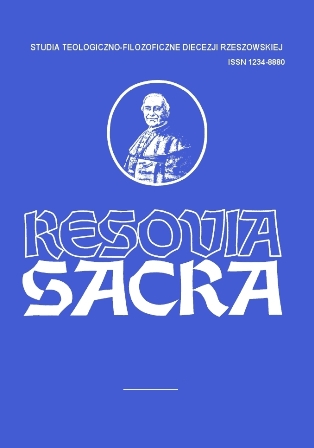ANALIZA NATURY „OBIEKTÓW PONADCZASOWYCH” W SCIENCE AND THE MODERN WORLD A.N. WHITEHEADA
THE ANALYSYS OF THE NATURE OF THE „ETERNAL OBJECTS” IN SCIENCE AND THE MODERN WORLD BY A.N. WHITEHEAD
Author(s): Paweł DudaSubject(s): Philosophy
Published by: Instytut Teologiczno-Pastoralny im. św. Józefa Sebastiana Pelczara w Rzeszowie
Keywords: eternal objects; relational essence; indywidual essence; abstractive hierarchy; abstraction; extensive continuum; actual occasion; general principle of ingression
Summary/Abstract: This article attempts to analyze the metaphysical category, defined by A. N. Whitehead as "eternal objects" in his „Science and the Modern World”. The abstract nature of the eternal objects creates its relational essence. The most important relationships because of the nature of the eternal object are internal relations. These relations are defined in the essence of the eternal object in relation to other eternal objects and are, for it constitutive relations forming its importance. Individual essence may be simple or complex of other eternal objects forming an "abstractive hierarchy", having two aspects: the abstraction of actualisation and abstraction of the possibilities. The complexity of the eternal object refers to its essence and is on its degree in the field of possibilities. In this way, eternal objects create an "extended continuum" as the basis of actual occasions. The relational essence determines the possibility of entering eternal objects in actual occasions, creating the so-called "the general principle of ingression". The world of Whitehead’s eternal objects is, therefore the great system of interrelationships that flow from the nature of opportunities and at the same time expresses it.
Journal: Resovia Sacra. Studia Teologiczno-Filozoficzne Diecezji Rzeszowskiej
- Issue Year: 2016
- Issue No: 23
- Page Range: 37-53
- Page Count: 17
- Language: Polish

